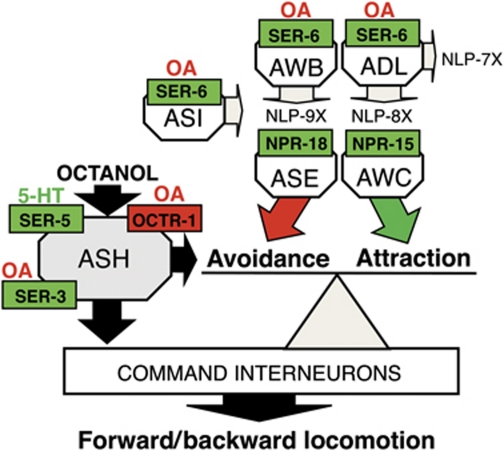Figure 9.
The OA inhibition of ASH-mediated aversive responses involves the OCTR-1-dependent inhibition of the ASHs and the SER-6-dependent stimulation of peptide release from the AWB, ADL and ASI sensory neurons. The ASHs mediate aversive responses and extensively innervate the command interneurons that control forward/backward locomotion, stimulating reversal. OA inhibits the ASHs directly through OCTR-1. In addition, OA through SER-6 stimulates the release of an array of neuropeptides from the ASIs, AWBs and ADLs that activate receptors on the AWCs and ASER. The AWCs and ASER mediate chemoattraction, not repulsion, and do not make extensive synaptic contact with the command interneurons, but instead along with the ASHs synapse extensively on a layer of interneurons that integrate multiple sensory inputs to modulate turning and reversal. The results of the present study suggest that these OA- and SER-6-dependent neuropeptides act on receptors in sensory neurons mediating chemoattraction to inhibit aversive responses and integrate chemoattractive and chemorepulsive signalling.

